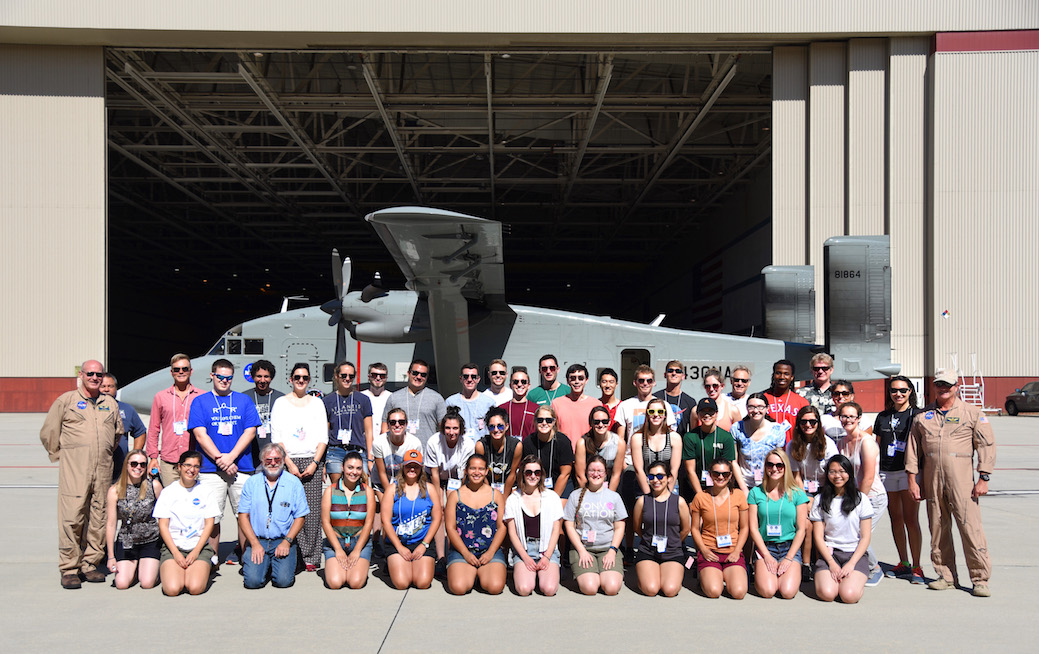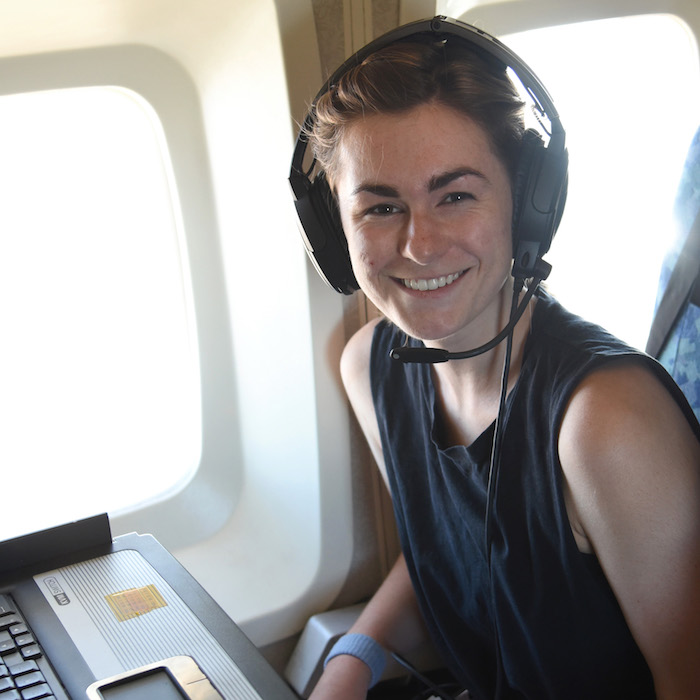Honors College senior spends summer reaching new heights with NASA
Avery Renshaw '18 completed an eight-week internship with the National Aeronautics and Space Administration’s Student Airborne Research Program (SARP) this past summer.
By Rio Napoli, Honors College on September 6, 2017

Instead of hitting the beach or festival scene this summer, Honors College student Avery Renshaw '18 completed an eight-week internship with the National Aeronautics and Space Administration’s (NASA) Student Airborne Research Program (SARP).
As an environmental science & studies major with a biology track, the highly selective program was a good fit for Renshaw. She and 31 students from across the nation spent weeks with a field campaign intended to immerse them in the NASA’s earth science research.
Renshaw recently chatted with the Honors College about her impressive internship experience.

Can you tell us a little bit more about the internship?
I was paid by NASA to spend the summer in California with 31 other STEM undergrads, collecting atmospheric data in research aircraft and conducting individual Earth and atmospheric science research projects. There were four multi-disciplinary research groups: atmospheric chemistry, whole air sampling (WAS), land ecology, and oceanographic processes. Everyone used NASA airborne and/or satellite data to carry out an individual research project. Each group had a faculty adviser and one of their Ph.D. students as a mentor to assist us when needed. We lived with our groups at UC Irvine's on-campus houses. As a proud member of the Oceans group, my project focused on finding a way to use satellites to detect and map the decline of a kelp species previously believed to not be reliably detectable by satellite. I proved that wrong!
What did your average day look like?
The first two weeks of the program consisted of lectures about Earth and atmospheric sciences and NASA's airborne science campaigns and data collection on-board two research aircraft—the NASA C-23 Sherpa and NASA Langley UC-12 King-Air. The final six weeks we spent at UC Irvine, collecting, analyzing and interpreting our data. Every weekday we had a mandatory 9 a.m. group meeting with our mentor to determine who needed help. Other than that, we decided our own schedules. Typically, I'd work into the afternoon/evening then I might walk with people to a local ice cream shop, visit the beach, or watch Westworld (our house show) with my group members. The night would also usually involve the planning or carrying out of pranks on the other groups — we had a particularly intense, summer-long prank war with the WAS group. I went to the Irvine Farmers' Market every Saturday morning and a different beach every weekend.
How did you find out about the opportunity?
I never knew NASA studies Earth and atmospheric science until I heard about another NASA earth science internship. While that particular opportunity didn't interest me, it did open a door to NASA I never knew existed! I was aimlessly searching the NASA internship database (NIFS OSSI) for something applicable to my field and interests when I finally found SARP.
What do you ultimately want to do in the future?
Good question...upon graduation, I plan to take some time to travel and do some volunteer environmental conservation work abroad. I will go to graduate school, but not until I'm positive about what I want to do. I'm leaning towards a career in habitat restoration, but I'm still discovering what's out there and what interests me.
Is there anything else you want to share about the program?
This was both the most enriching and unbelievably fun experience I've ever had. I cannot recommend SARP more. Virtually any STEM major — even if you aren't an Earth science or atmospheric chemistry major — can successfully develop a SARP research project that caters to their interests.